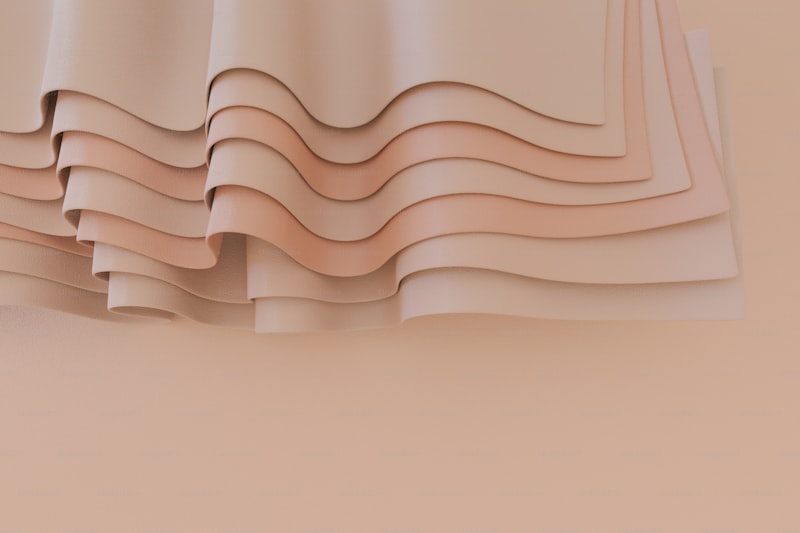Mastering Artistic Draping Techniques: Elevate Your Fabric Game
Understanding Artistic Draping Techniques
Artistic draping techniques are an essential skill for fashion designers, artists, and DIY enthusiasts alike. By manipulating fabric in creative ways, you can transform simple materials into stunning visual pieces that capture attention and convey meaning. In this article, we will explore various draping techniques, their applications in fashion and art, and tips for mastering them.
The Importance of Draping in Fashion Design
Draping is not just about arranging fabric haphazardly. It plays a crucial role in the fashion design process. Here’s why:
- Visualization of Ideas: Draping allows designers to visualize their concepts in three-dimensional form, making it easier to refine styles and silhouettes.
- Fabric Behavior: Different fabrics behave differently; draping helps designers understand how materials will flow, hang, and interact with movement.
- Unique Aesthetic: Skillful draping can create unique, sculptural garments that stand out in a crowded marketplace.
Basic Draping Techniques to Get Started
Here are some foundational draping techniques that every aspiring designer should master:
| Technique | Description |
| Soft Draping | Involves using lightweight fabrics to create gentle, flowing silhouettes. Ideal for dresses and fluid tops. |
| Structured Draping | Uses stiffer fabrics to create bold and architectural shapes. Perfect for jackets and structured dresses. |
| Asymmetrical Draping | Creates a modern and edgy look by placing fabric unevenly. Great for statement pieces. |
| Layered Draping | Involves combining multiple layers of fabric to add depth and complexity. Effective in evening wear. |
Advanced Artistic Draping Techniques
Once the basics are mastered, designers can move on to more advanced techniques that push the boundaries of creativity.
1. Experimental Draping
This technique involves experimenting with unconventional fabrics and shapes. Use materials like tulle, mesh, or burlap to create irregular shapes that defy traditional patterns.
2. Pattern Draping
This technique integrates patterns directly into the draping process. By using printed fabrics, designers can manipulate visuals and create harmonious designs that visually express the intended aesthetic.
3. Sculptural Draping
This style emphasizes the art of sculpting fabric into structured forms. Utilize boning, padding, or wiring to maintain shape while allowing for dynamic movement.
Key Considerations When Draping
As you incorporate various draping techniques, keep in mind the following considerations:
- Fabric Choice: The type of fabric significantly affects the outcome. Consider weight, texture, and elasticity.
- Body Shape: Understand how different draping techniques will flatter various body types. Experiment with multiple sizes to optimize fit.
- Purpose: Know whether you’re designing for a runway, a store collection, or a personal project, as each context influences your draping choices.

Applying Artistic Draping Techniques in Art
Beyond fashion, artistic draping techniques can be applied in various art forms, including sculpture, installation art, and home décor. Artists like Alexander McQueen have showcased the power of draping in their works, demonstrating how fabric manipulation can create a narrative or evoke emotion.
Draping in Sculpture
In sculpture, draping techniques can bring a sense of movement and life to static forms. Artists often use materials like clay or wire to mimic the natural flow of fabric, creating an illusion of draped materials.
Draping in Installation Art
Installation artists often use draping to transform spaces and challenge perceptions. For instance, fabric can be hung, layered, or shaped to alter the viewer's experience within an environment, inviting them to walk through or interact with the art.
Conclusion: Mastering Artistic Draping Techniques
Mastering artistic draping techniques is not only about enhancing skills but also about unlocking creativity. Whether you are designing a fashion collection or creating a work of art, the way you manipulate fabric can make all the difference. Remember to experiment and let intuition guide you, and don’t be afraid to break the rules of conventional draping. As you develop your own unique style, you will find that the possibilities are endless. Happy draping!
In summary, embrace the various draping techniques discussed and consider fabric choice, body shape, and the intended purpose. As you gain experience, each piece you create will reflect your artistry and vision. Stay inspired, keep experimenting, and your skills will continue to grow. Explore resources, attend workshops, and engage with other artists to further your draping journey!